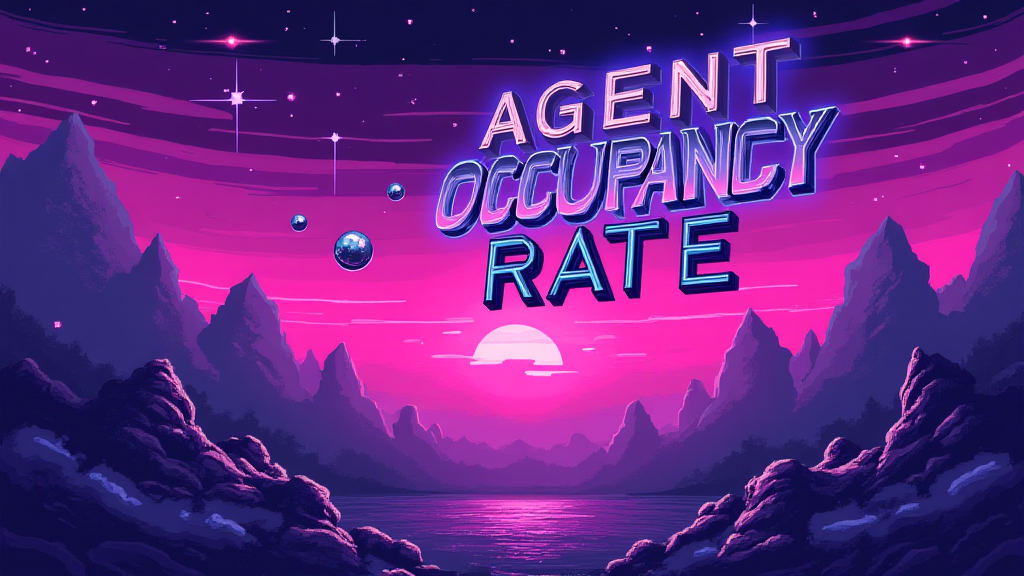Agent Occupancy Rate: Measuring Call Center Efficiency

Published on: October 01, 2024
In the world of call centers and customer service operations, efficiency is key to success. One crucial metric that helps measure this efficiency is the Agent Occupancy Rate. This powerful indicator provides valuable insights into how effectively agents are utilizing their time and resources.
What is Agent Occupancy Rate? 📊
Agent Occupancy Rate is a key performance indicator (KPI) that measures the percentage of time an agent spends actively handling customer interactions compared to their total logged-in time. It's calculated using the following formula:
Agent Occupancy Rate = (Handle Time / Total Logged-in Time) x 100
Where:
- Handle Time: The total time spent on customer interactions, including talk time, hold time, and after-call work.
- Total Logged-in Time: The total time an agent is logged into the system and available for work.
Why is Agent Occupancy Rate Important? 🎯
Understanding and optimizing Agent Occupancy Rate is crucial for several reasons:
- Efficiency Measurement: It provides a clear picture of how efficiently agents are utilizing their time.
- Resource Allocation: Helps managers determine if they have the right number of agents scheduled.
- Agent Burnout Prevention: Consistently high occupancy rates can lead to agent stress and burnout.
- Cost Management: Balancing occupancy rates helps optimize staffing costs.
- Customer Satisfaction: Proper occupancy rates ensure agents have time to provide quality service.
Optimal Agent Occupancy Rate 🎚️
While the ideal occupancy rate can vary depending on the industry and specific call center goals, generally:
- An occupancy rate between 70-80% is considered optimal for most call centers.
- Rates below 70% may indicate overstaffing or inefficient processes.
- Rates above 80% could lead to agent burnout and decreased service quality.
Factors Affecting Agent Occupancy Rate 🔄
Several factors can impact the Agent Occupancy Rate:
- Call volume and patterns
- Average handle time
- Staffing levels
- Technology and tools
- Agent skills and training
- Scheduling efficiency
Strategies to Optimize Agent Occupancy Rate 💡
To maintain a healthy Agent Occupancy Rate, consider implementing these strategies:
- Accurate Forecasting: Use historical data and predictive analytics to forecast call volumes accurately.
- Flexible Scheduling: Implement flexible shifts to match staffing with expected call volumes.
- Cross-training: Train agents to handle multiple types of inquiries to balance workload.
- Implement Self-Service Options: Offer self-service channels to reduce simple, repetitive inquiries.
- Optimize After-Call Work: Provide tools and training to streamline post-call tasks.
Common Misconceptions about Agent Occupancy Rate ⚠️
Be aware of these common misconceptions:
- Higher is Always Better: Extremely high occupancy rates can lead to burnout and reduced service quality.
- It's the Only Important Metric: While crucial, it should be balanced with other KPIs like customer satisfaction and first-call resolution.
- One-Size-Fits-All: Optimal occupancy rates can vary based on industry, call complexity, and business goals.
Conclusion
Agent Occupancy Rate is a vital metric for call center operations, providing insights into efficiency, resource allocation, and agent well-being. By understanding and optimizing this KPI, businesses can improve their customer service operations, reduce costs, and enhance both agent and customer satisfaction.
As you consider implementing or improving your focus on Agent Occupancy Rate, ask yourself:
- How does our current Agent Occupancy Rate compare to industry standards?
- What tools and processes can we implement to better track and optimize this metric?
- How can we balance Agent Occupancy Rate with other important KPIs in our call center?
- What strategies can we employ to maintain an optimal occupancy rate while ensuring high-quality customer service?

















